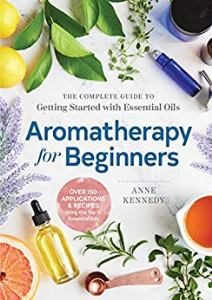 I have blogged about Essential Oils in this site a few times already – from the staple ones to always have at home to oils you can use for timeless skin, but never really talked about how to use it.
I have blogged about Essential Oils in this site a few times already – from the staple ones to always have at home to oils you can use for timeless skin, but never really talked about how to use it.
Using a diffuser is the most widely known method but there are actually more ways to use your essential oils besides that. If you have a set at home or wanting to get one but don’t know how to use them, keep on reading because in today’s article, I’ll share with you a bunch of different ways to use essential oils for different needs.
1. Topically
Some essential oils can be applied directly to the skin (as skincare, for wound care, massage, chest rub, etc.), which is an easy way to target specific areas of the body. However, some oils are too strong for direct application, hence the need for a carrier oil to dilute them. If you plan to use your essential oils topically, you should know the dilution ratio and which type of carrier oil to use. Some examples of carrier oils are sweet almond, jojoba, rose hip, coconut and olive oil – generally, just any cold-pressed vegetable or fruit oil.
2. Bath
Nothing beats a long, relaxing bath at the end of the day and adding essential oils will instantly give you more therapeutic benefits. However, there’s a lot more to it than just dropping oils in your bath water. Remember, oil and water don’t mix. So when you get inside your tub, those undiluted oils can adhere to your skin which can irritate and burn. The solution? Dilute your chosen essential oil by mixing it with a carrier oil, whole milk, baking soda or Epsom salt before putting it to your bath water.
3. Foot Soak & Massage
The soles of our feet have a lot reflex points and contain some of the largest pores in our bodies, which is why using essential oils for foot massage and soak/bath is a great method to make the most of the EO’s therapeutic benefits.
4. Steam Inhalation
Suffering from common flu and colds? Steam inhalation is one of the best natural ways to relieve congestion, as well as sore throat and cough. To make inhalations more effective, add essential oils that have decongestant, antibacterial and antiviral properties such as eucalyptus, lavender, rosemary and peppermint. As a precaution, inhalations are not recommended for those who have asthma and certain allergies.
5. Scented Pillow
If you have problems with sleep, one or two drops of certain essential oils with calming and sleep-inducing properties (e.g. Lavender, Clary Sage, Ylang-Ylang, Cedarwood) on your pillow case will guarantee a good night’s sleep and a clear mind when you wake up.
To educate yourself more on how to use Essential Oils safely and effectively, here are some book recommendations:
- Aromatherapy for Beginners: The Complete Guide to Getting Started with Essential Oils
- Essential Oils for Beginners: The Guide to Get Started with Essential Oils and Aromatherapy
- Use This For That!: Your Easy Essential Oil Guidebook
- The Encyclopedia of Essential Oils: The Complete Guide to the Use of Aromatic Oils In Aromatherapy, Herbalism, Health, and Well Being









